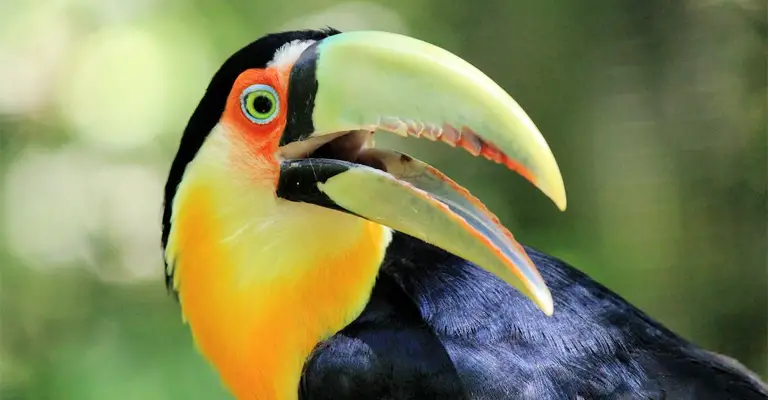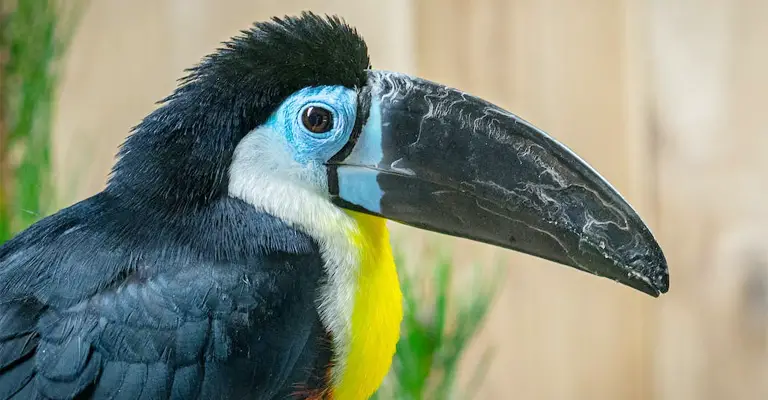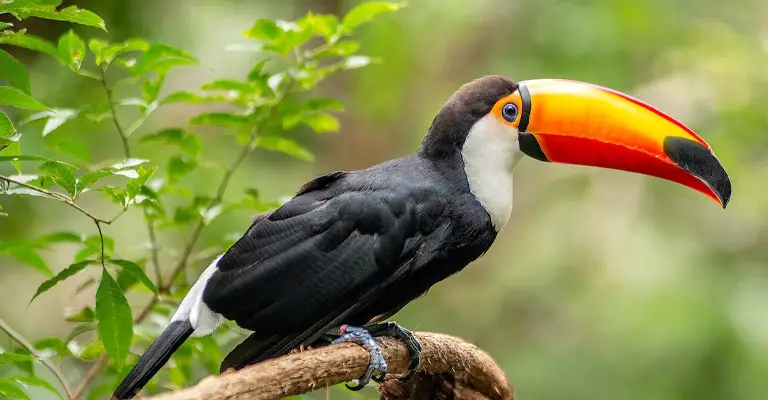In the world of avian adaptations, few structures are as diverse and essential as the beak. Often referred to as a bird’s multi-purpose tool, the beak is a remarkable adaptation that has evolved to suit a myriad of ecological roles and feeding strategies.
From the delicate probing of nectar-sipping hummingbirds to the powerful tearing of flesh by raptors, each beak shape is a testament to the remarkable intricacies of nature’s design.
The evolutionary journey of bird beaks showcases the dynamic interplay between form and function, highlighting how these specialized structures have enabled birds to conquer various habitats and exploit diverse food sources.
Understanding why do birds have beaks unveils the fascinating ways in which adaptation shapes the lives of these remarkable creatures.

Why Do Birds Have Beaks?
Birds possess beaks, also known as bills, which are specialized structures that serve various essential functions.
These beaks have evolved to suit the specific ecological niches and feeding behaviors of different bird species.
Here are several reasons why birds have beaks:
Feeding Adaptations
Bird beaks come in a diverse range of shapes and sizes, each tailored to a particular diet. For instance, long, slender beaks like those of hummingbirds are suited for sipping nectar, while strong, hooked beaks like those of eagles are ideal for tearing flesh.
Foraging Strategies
The beak’s shape helps determine a bird’s foraging strategy. Birds with probing beaks, like woodpeckers, can search for insects under bark, while birds with curved beaks, like parrots, can manipulate objects and food items.
Prey Capture
Predatory birds have sharp, powerful beaks that aid in capturing and immobilizing prey. Raptors, such as hawks and owls, rely on their beaks to tear apart their catch for consumption.
Crushing and Grinding
Birds that consume seeds or hard-shelled invertebrates, such as finches and sparrows, possess strong beaks capable of cracking open seeds or breaking down tough exoskeletons.
Filtering
Birds like flamingos and ducks have specialized beaks for filtering food from water.
Their beaks contain structures like lamellae or fine bristles that help trap small organisms from their aquatic environment.
Nesting and Building
Some birds use their beaks to collect nesting materials, shape nests, and construct intricate structures. The beaks of weaver birds, for example, are adapted for manipulating twigs and grasses.
Display and Communication
Beak coloration and size can play a role in attracting mates and displaying dominance. Vibrant beak colors or patterns can signal health and vitality, influencing mating choices.
Temperature Regulation:
In some species, the beak’s blood vessels can help regulate body temperature. By increasing or decreasing blood flow to the beak’s surface, birds can dissipate or conserve heat.
Sensory Organs:
Some birds have specialized sensory organs in their beaks, allowing them to detect vibrations, touch, or changes in temperature. This can aid in locating prey or assessing the environment.
Birds’ beaks are a testament to the incredible diversity and adaptability of avian species. Their form and function reflect millions of years of evolution, enabling birds to thrive in a wide range of habitats and fulfill their unique ecological roles.
Why Do Birds Have Different Beak Sizes?

Birds have different beak sizes because they have adapted to different types of food and habitats.
The shape and size of a bird’s beak can tell us a lot about what it eats and how it lives.
Here are some points that explain why birds have different beak sizes:
To Match The Size Of Their Prey:
Some birds, such as raptors, herons, and kingfishers, have large and sharp beaks that can catch and kill large prey, such as fish, rodents, or reptiles.
These beaks are also useful for tearing flesh and bones. Large prey are a rich source of protein and energy for these birds.
To Access Hard-To-Reach Food:
Some birds, such as woodpeckers, hummingbirds, and crossbills, have long and slender beaks that can reach deep into holes, crevices, or flowers to extract food, such as insects, sap, or nectar.
These beaks are also adapted to the shape and size of the food sources they visit. Hard-to-reach food is a good source of carbohydrates and vitamins for these birds.
To Break Open Tough Shells:
Some birds, such as parrots, finches, and toucans, have strong and thick beaks that can crack open hard shells of seeds, nuts, or fruits.
These beaks are also useful for crushing or grinding the food before swallowing it. Tough shells are a good source of fiber and minerals for these birds.
To Filter Water And Mud:
Some birds, such as flamingos, ducks, and spoonbills, have specialized beaks that can filter water and mud to catch small organisms, such as fish, crustaceans, or algae.
These beaks have lamellae or comb-like structures that trap the food while letting the water pass through. Small organisms are a good source of calcium and iodine for these birds.
These are some of the reasons why birds have different beak sizes. As you can see, beaks are very important for birds’ survival and adaptation to their environment.
They are also used for other purposes such as preening, nest building, defense, communication, and feeding young.
Do All Birds Have Beaks?

Yes, all birds have beaks, but they are not all the same. Beaks are external structures that are mostly made of keratin, the same substance that forms our hair and nails.
Beaks are used for many purposes, such as eating, preening, manipulating objects, killing prey, fighting, probing for food, courtship, and feeding young.
Beaks have evolved differently in each bird species to suit their needs and environment.
For example, some birds have long and slender beaks to sip nectar from flowers, while others have sharp and curved beaks to tear meat from their prey.
Some birds have strong and thick beaks to crack open seeds and nuts, while others have flat and wide beaks to catch insects in the air.
Some birds have specialized beaks that can filter water and mud to catch small organisms, while others have simple beaks that can eat a variety of foods.
Beaks are one of the most characteristic features of birds, and they tell us a lot about their behavior and lifestyle.
Beaks are also used for other functions, such as communication, navigation, temperature regulation, and nest building. Beaks are amazing adaptations that help birds survive and thrive in nature.
FAQ
Birds have beaks primarily for feeding and survival. The beak’s shape and size are adapted to their specific diets and feeding strategies, allowing them to capture, manipulate, and consume food effectively.
The beak’s shape is closely linked to a bird’s diet. Birds with long, thin beaks are often nectar feeders, while those with strong, hooked beaks are predators that tear flesh.
Yes, different bird species have evolved beaks that suit their specific feeding habits and ecological niches. Beak shapes vary widely across species to accommodate various food sources and foraging techniques.
Bird beaks can evolve over time through natural selection. If changes in habitat or food availability occur, birds with beaks better suited to the new conditions are more likely to survive and pass on their traits.
No, a bird’s beak has multiple functions beyond feeding. It can aid in nest construction, communication, thermoregulation, defense, and even sensory functions like detecting temperature changes or vibrations.
Conclusion
The beak, an embodiment of nature’s innovation, is a testament to the ever-evolving dance between form and function.
Its diverse shapes and sizes are a tribute to the adaptability of birds to their unique environments and lifestyles. From gathering nectar to catching fish, and cracking seeds to excavating tree bark, the beak is an all-purpose tool that enables birds to thrive across the globe.
As we observe the intricate variations in beak morphology, we gain insight into the complex interplay between biology and ecology, a symphony that has played out over millions of years of evolution.
The beak’s versatility is a living testament to the wondrous diversity of life on our planet and the astounding ways in which creatures have harnessed their physical attributes to survive and flourish.